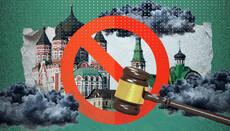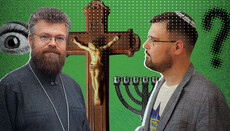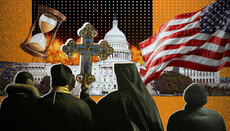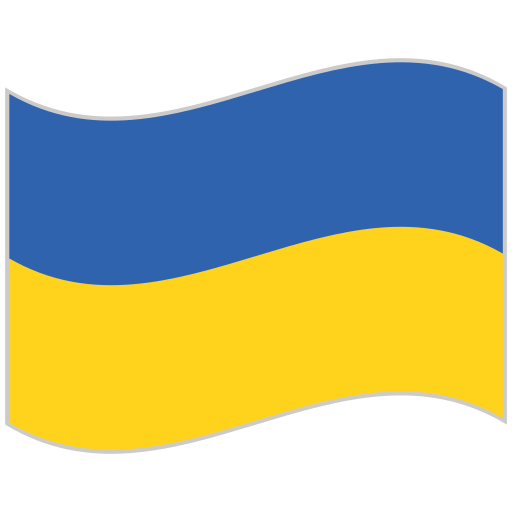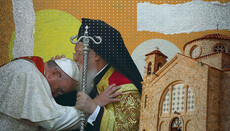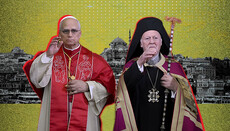Govt's blasphemy at Lavra: Why are anatomists and vets studying holy relics?

The authorities have seized the Lavra Caves. Veterinarians, anatomists, and biologists will "study" the relics of the Venerable Fathers. Could the authorities have slapped in believers' faces any more openly?
On March 28, 2025, a commission from the Ministry of Culture arrived at the Kyiv-Pechersk Lavra, accompanied by police. Early in the morning, while the city was still asleep, several vehicles with law enforcement officers entered the monastery grounds – some of them carrying angle grinders. They cut and replaced the locks on the doors leading to the Near Caves and proceeded inside. Soon after, the same fate befell the Far Caves. This marked the effective state seizure of one of the most revered Orthodox shrines in the world – the relics of the Venerable Fathers of the Kyiv Caves.
Since 2023, when the government announced it was "reclaiming" the Kyiv-Pechersk Lavra, officials had taken over several buildings where the monastic community lived, though the caves had remained untouched. As of August 10, 2023, the faithful had been barred from entering the monastery grounds, but it was still possible to visit the relics of the Pechersk saints as part of paid excursions. The keys to the caves remained with the monks, who continued to care for the relics – changing vestments with prayer and maintaining order.
Now, all of that has changed.
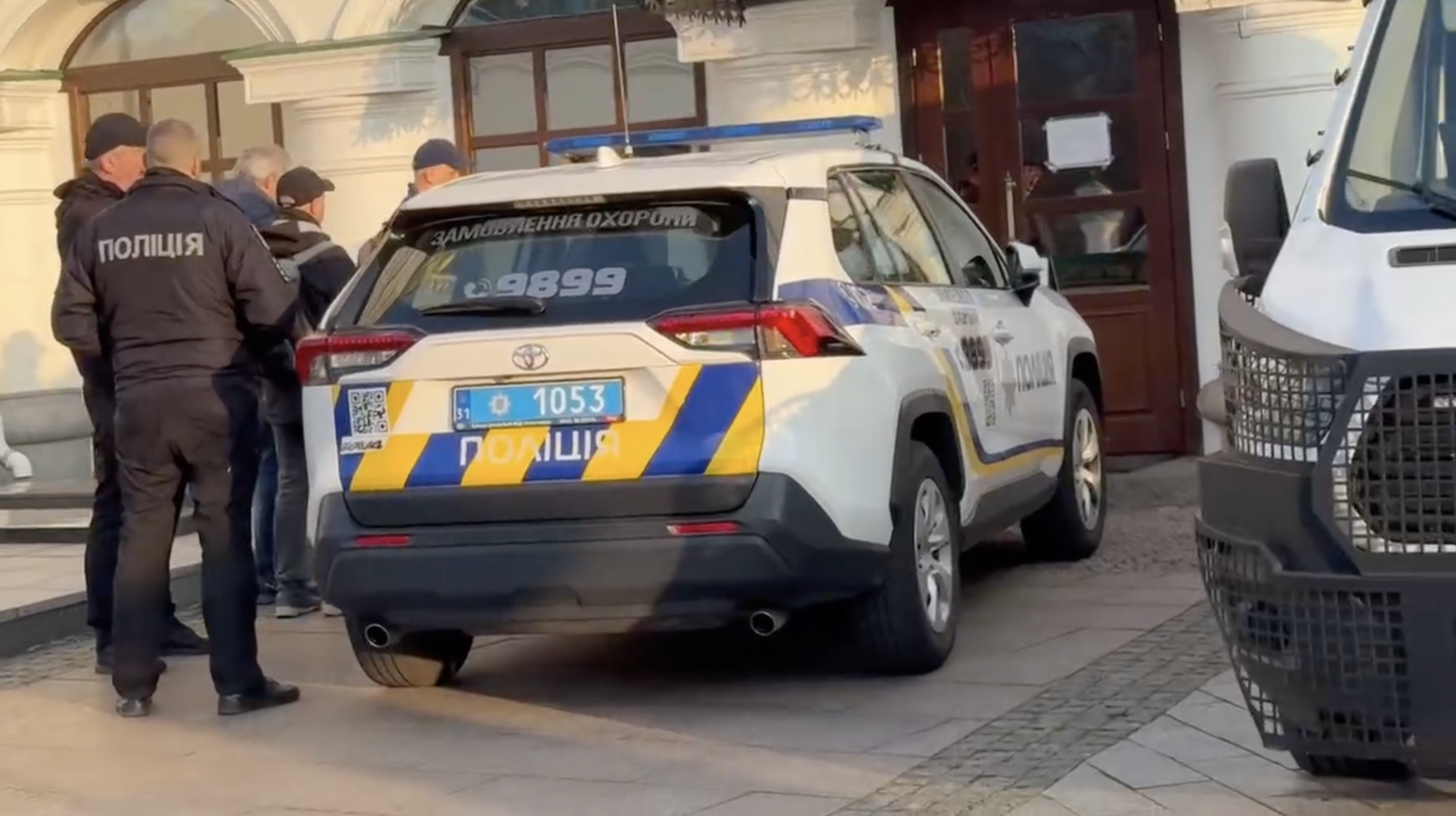
The cave raid operation was led by Oleksandr Ovchar, the deputy director of the Kyiv-Pechersk Lavra Reserve and a member of the Ministry of Culture commission. An operation began to check the "presence of the remains of saints in the tombs of the Near and Far Caves", as well as to determine the "historical and scientific value of the remains of the saints".
It was with such wording that the order of the Minister of Culture Nikolai Tochitsky dated March 5, 2025, was issued to create the corresponding commission.
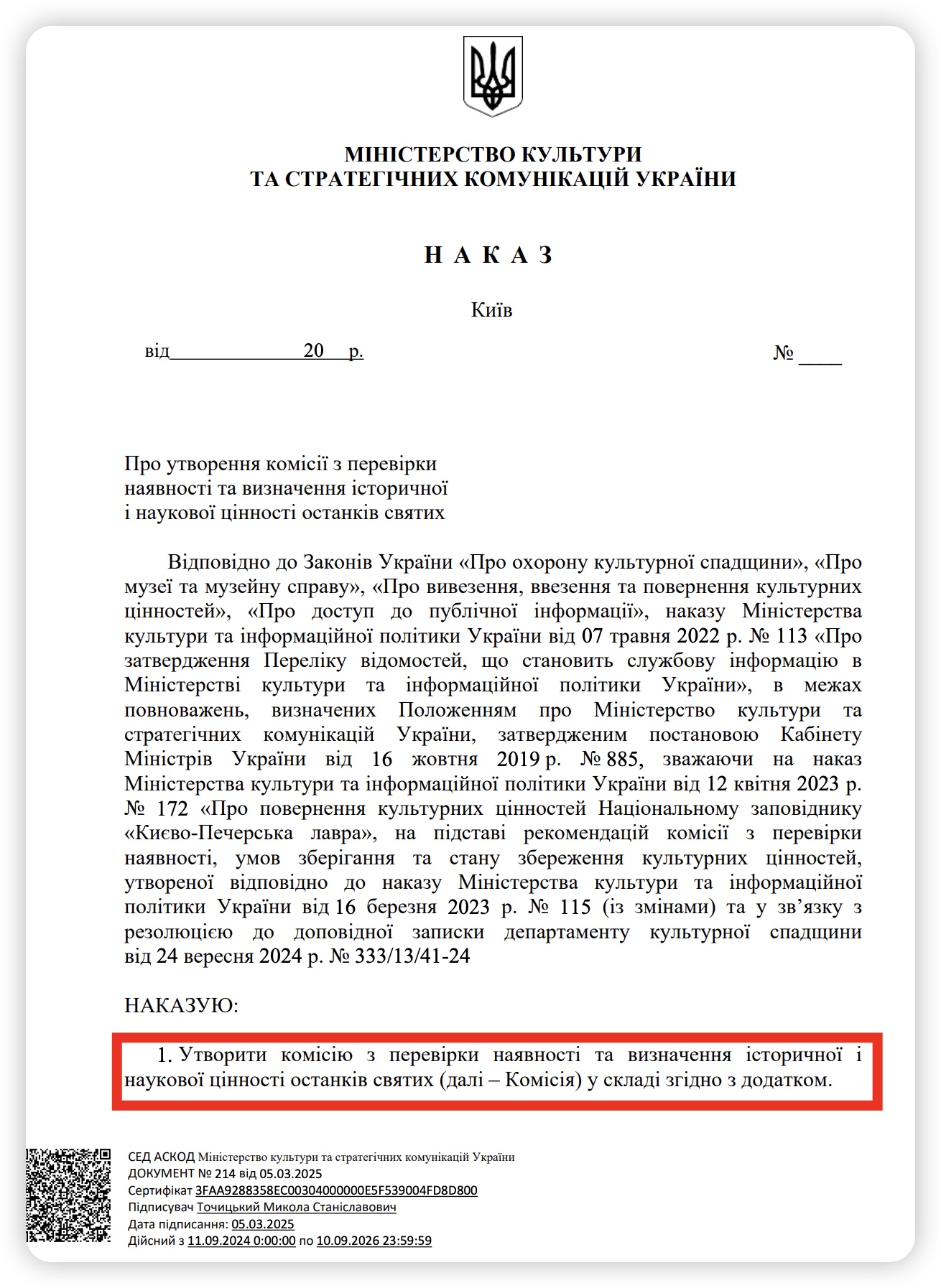
According to the document, information regarding the work and findings of the commission will be classified. However, judging by the list of commission members, it’s not hard to guess what exactly they intend to do with the relics. The commission includes 25 individuals, and some of their specializations are particularly telling.
Among them:
- E. Appelkhans – Head of the Department of Anatomy at Odesa National Medical University; President of the Scientific Society of Anatomists, Histologists, Embryologists, and Topographic Anatomists of Ukraine.
- N. Bolela – Researcher in the Department of Biological Studies at the National Research and Restoration Center.
- Yu. Huminskyi – Professor of Human Anatomy at Vinnytsia National University; member of the Pirogov Commission on re-embalming the body of Mykola Pirogov.
- O. Melnyk – Head of the Department of Vertebrate Biomorphology; Doctor of Veterinary Sciences; also a member of the Pirogov Commission.
- H. Tkach – Doctor of Medical Sciences; another member of the Pirogov Commission.
In other words, those "working" with the relics include doctors, anatomists, embalming experts, and even veterinarians. It’s hard to believe they’re simply there to verify the presence of relics in the reliquaries. Their professional backgrounds suggest they were brought in to carry out medical and scientific experiments on the remains – collecting tissue samples and conducting various procedures.
But how ethical is this in relation to the Church and the feelings of believers? Any Christian in the world, regardless of denomination, would likely call this by one word only – blasphemy.
Let us imagine a few hypothetical scenarios and try to model how Ukrainian and global society might react:
The Ministry of Culture nationalizes the grave of Rabbi Nachman of Breslov and creates a commission to examine his remains. Several police units arrive in Uman, exhume the body, and anatomists, biologists, and veterinarians begin their research.
The Italian government, with the Vatican’s approval, issues a decree to form a commission to examine the relics of the apostles Peter and Andrew, Saint John Chrysostom, and Popes Gregory the Great, Leo the Great, and John Paul II. Police with specialized equipment arrive at St. Peter’s Basilica, dismantle the altar and columns, and the commission collects “samples” for analysis.
Saudi Arabia announces it will study the remains of the Prophet Muhammad. Police detachments with bulldozers and excavators arrive at Al-Masjid an-Nabawi in Medina and dismantle the Prophet’s tomb. Biologists, anatomists, and veterinarians retrieve the remains and begin scientific investigation.
We sincerely apologize to anyone offended by these imagined scenarios. But what is happening today in the Kyiv-Pechersk Lavra is precisely the same – an act of cynical, demonstrative blasphemy. Every nation has its deeply venerated sanctuaries. That is why democratic countries have strict laws protecting religious freedom and faith.
At the same time, in states where the Church is separate from the government, the authorities have no right to meddle with shrines. The relics of the Venerable Fathers of the Kyiv Caves are venerated as evidence of their life of prayer – so intense that God granted them incorruptible bodies. Nowhere else in the world is there such a number of incorrupt saints. Their relics are of unquestionable value – but a spiritual value for Christians, not a material one for the state.
To the authorities, the relics of Saint Anthony of the Caves are no different from the bones of any of his contemporaries. And yet, police squads don’t dig up graves in public cemeteries. So what is the real purpose of medical experiments on the relics of saints – relics that have been honored for centuries by our people and pilgrims from around the world?
We’ve seen this before – not long ago.
The commissions of the Bolsheviks and Ukraine’s Ministry of Culture: What’s the difference?
After the Bolsheviks came to power in 1917, the monastic community at the Lavra continued to exist as a cooperative. But in 1926, the All-Ukrainian Central Executive Committee and the Council of People’s Commissars of the Ukrainian SSR issued a decree declaring the former Kyiv-Pechersk Lavra a historical and cultural state reserve and transforming it into an "All-Ukrainian Museum Complex".
What happened to the relics back then is exactly what is happening now. Professor Ivan Nikodymov, who served as legal counsel to the Lavra in the 1920s–1940s, wrote in his book Memories of the Kyiv-Pechersk Lavra:
“First, they ‘prepared’ for the opening of the relics by manipulating public opinion. Local Soviet newspapers published articles calling for the destruction of the relics. Then an inspection was conducted, and the relics were transferred to the jurisdiction of an anti-religious museum.
According to the atheists’ plan, a ‘relics factory’ was created in the Lavra, which was described in every tourist guidebook as an example of how monks supposedly deceived the masses.
People knew this wasn’t true and that the so-called ‘factory’ was nothing but a fabrication of anti-religious propaganda. Yet it continued to operate and was shown to visitors...
More than once, after an especially zealous anti-religious lecture from the guide trying to prove that monks had only sought to extract money from the people, someone would ask: ‘Did the monks charge an entrance fee to the caves like you do now?’
The flustered guide would have to answer, ‘No.’”
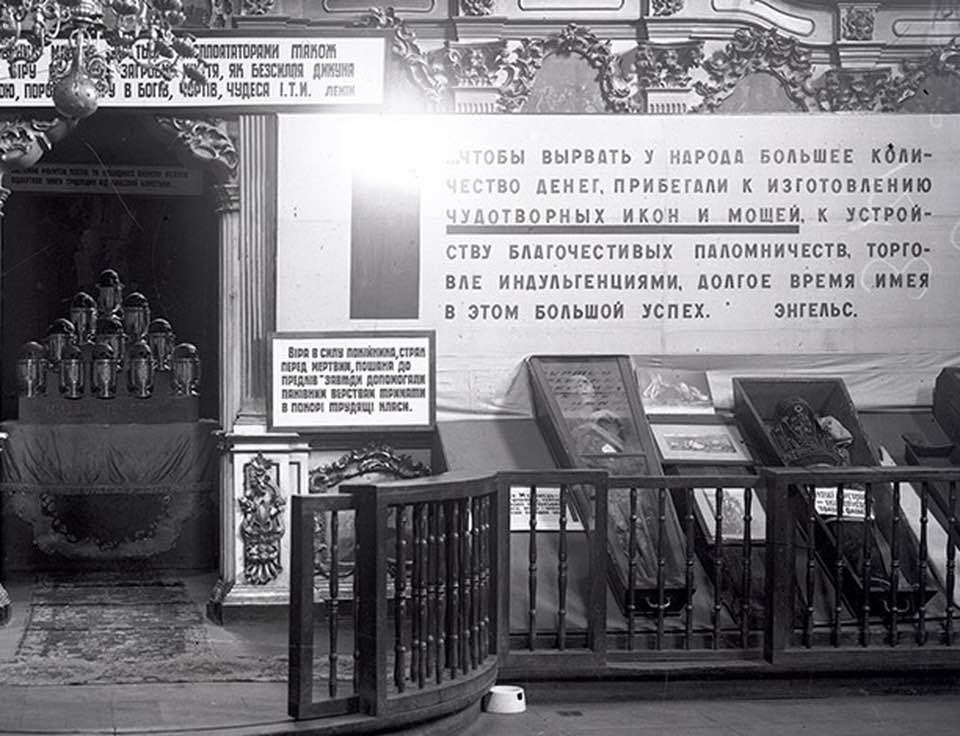
It’s clear why the USSR commissars needed their "research" – they were trying to prove that God does not exist, and that relics were a hoax meant to deceive the gullible public.
But today, the situation appears to be entirely different. The Ministry of Culture isn’t promoting atheism; on the contrary, the authorities are actively promoting the OCU (Orthodox Church of Ukraine) and investing great effort in securing its presence at the Kyiv-Pechersk Lavra.
How to organize a “monastic forum” while planning to “inventory” holy relics
Just before the caves were seized, the management of the Lavra reserve, along with several OCU representatives, held a "monastic forum" focused on “rethinking the role of monasticism in the modern world, seeking new forms of ministry,” and discussing “the future of monastic life in Ukraine.” The forum was initiated by the head of the reserve, Maksym Ostapenko, and a reserve staff member who also serves as the “abbot of the Kyiv-Pechersk Lavra of the OCU,” Avraamy Lotysh.
Meanwhile, the Ministry of Culture has spent months in court attempting to evict 200 monks of the UOC from the Lavra – monks who have lived and prayed there since its reopening in 1988.
It’s utterly incomprehensible how anyone can force monks out of their monastery and then speak seriously about “the future of monastic life in Ukraine.”
Even more baffling is the OCU’s silence regarding the blasphemy being carried out by the Ministry of Culture against the relics of the Venerable Pechersk Fathers. Lotysh, being a reserve employee, surely knew about these plans in advance.
How can a clergyman calmly accept the idea that anatomists and veterinarians will "study" the incorrupt bodies of saints – treating them as biological specimens – is difficult to understand. Then again, perhaps it's small wonder, given that Lotysh and his colleagues have greenlighted cooking shows, dance performances, and rock concerts at the Lavra.
DESS and the Bolsheviks: An invisible connection
There is another, less obvious aspect to this shameful story. One of the members of the Ministry of Culture’s commission for the “study of the historical and scientific value of saintly remains” is a close associate of Viktor Yelensky – namely, Vyacheslav Horshkov, head of the religious affairs department of the State Service for Ethnopolitics and Freedom of Conscience (DESS). In other words, this commission is being overseen by the government’s official religious agency.
This leads us to recall the background of DESS’s head. Today, Viktor Yelensky presents himself as a model Ukrainian patriot, denouncing Soviet crimes and claiming to champion democratic values and religious freedom.
But 35 years ago, he held very different views he was one of the most active voices in Leninist atheist propaganda.
In some of his past writings – such as Jewish Clericalism and Zionism – Yelensky described Jews as a “bourgeois threat” to the USSR. In others, he praised how comfortably Protestants lived under Soviet rule. Perhaps his most striking work was “Implementation of the Decree on the Separation of Church and State in the Early Years of Socialist Construction in the Ukrainian SSR.”
There, Yelensky praised Lenin’s policies for their effectiveness in dismantling and robbing the Church, claiming that even believers supported them:
“Party organizations and the Soviets, in implementing Lenin’s decree on the separation of Church and State, relied on the anticlerical movement of the working masses, who, in most cases, welcomed the decree. Even the clergy, by 1921, were forced to admit that the Ukrainian Orthodox population viewed the separation of Church and State with sympathy.”
As for the resistance of clergy and believers to the closure of churches and seizure of religious property, Yelenskyi portrayed it as anti-people and anti-Soviet:
“The clergy particularly resisted the confiscation of church land and property. The fight against the seizure of church valuables most clearly revealed the anti-popular character of the leadership of Russian Orthodoxy... Church leaders developed a broad program of resistance to Lenin’s decree, which aligned entirely with counterrevolutionary plans to overthrow Soviet power.”
Sound familiar? Today, when the state seizes and robs the Church, it’s framed as virtuous. But if clergy or believers oppose it – they are accused of “seeking to overthrow the government.” The only difference is the name of the regime doing the oppressing. Back then, it was the USSR. Today, it’s Ukraine.
Yelensky now publicly supports the OCU. His main argument? The Dumenko-led structure is “pro-government.” But he used exactly the same justification during the “Leninist” period to praise the Renovationist schismatics:
“The Renovationists tried to save the Church by revising its political and social orientation and establishing normal relations with Soviet power.”
But does any of this mean the current DESS head is a believer or sympathizer of the Orthodox faith? Not at all.
In one of his works, Yelensky lays out his personal creed:
“We, atheists, believe that the scientific-materialist worldview liberates a person’s essential forces, enabling them to perceive the world accurately and navigate it properly.”
Conclusions
The seizure of the Near and Far Caves of the Kyiv-Pechersk Lavra, followed by the "research" into the “historical and scientific value of the saintly remains” of the Pechersk Fathers, is blatant blasphemy by Ukrainian authorities – not just against believers of the UOC, but against the entire Orthodox Church. The Kyiv-Pechersk Lavra is a sacred site for the whole Orthodox world; nowhere else is there such a concentration of incorrupt saints’ relics.
What the Ukrainian government is doing with the relics of the Venerable Pechersk Fathers is almost a carbon copy of Soviet atheist policies. The forceful seizure of the caves, the offensive language in official decrees, the methods used for the “research” – all of it shows that the Ministry of Culture and the State Service for Ethnopolitics are the direct heirs of Soviet commissars. We see absolutely no difference.
The OCU’s silent acquiescence to these actions is further evidence of the non-ecclesiastical nature of this structure. Orthodox Christians cannot remain indifferent to such desecration of great saints. Orthodox Christians know that the Holy Spirit, which sanctifies the saints during their lifetime, remains present not only in their souls but also in their bodies – and does not depart from them after death.
All democratic nations and international institutions that value religious freedom must take a stand. What is happening in Ukraine is not a victory of a “good” Church over a “bad” one – it is the triumph of atheism.
But above all, we await the response of the Local Orthodox Churches, led by the Ecumenical Patriarchate. It is no longer possible to pretend that nothing alarming is happening to the Ukrainian Orthodox Church and its sacred treasures.
